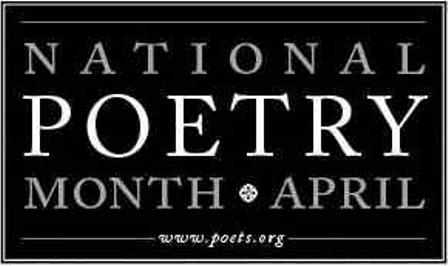
To celebrate National Poetry Month, we’ve put together a reading list based on the works and lives of New England poets. It’s by no means an exhaustive list; the majority of the poets included here are practically household names (I’m looking at you, Robert Frost. You too, Emily Dickinson). You’ll find below: biographies, letters, fictionalized life stories, and reading material that extends to include family and friends. At the bottom of the list are books on reading and writing poetry, in case you’d like to pen your own, along with titles on the topic of mental illnesses (more than one poet included here took their own life or suffered from depression), and also on poetry circles (such as the one briefly formed by Lowell, Sexton and Plath).
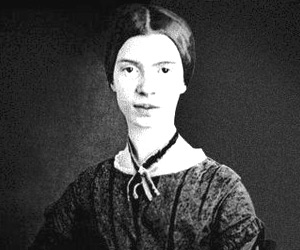 Emily Dickinson
Emily Dickinson
Miss Emily by Nuala O’Connor.
Eighteen-year-old Ada Concannon has just been hired by the respected but eccentric Dickinson family of Amherst, Massachusetts. Despite their difference in age and the upstairs-downstairs divide, Ada strikes up a deep friendship with Miss Emily, the gifted elder daughter living a spinster’s life at home. But Emily’s passion for words begins to dominate her life. She will wear only white and avoids the world outside the Dickinson homestead. When Ada’s safety and reputation are threatened, however, Emily must face down her own demons in order to help her friend, with shocking consequences. [GoodReads]
The Gorgeous Nothings by Emily Dickinson.
The Gorgeous Nothings — the first full-color facsimile edition of Emily Dickinson’s manuscripts ever to appear — is a deluxe edition of her late writings, presenting this crucially important, experimental late work exactly as she wrote it on scraps of envelopes. A never-before-possible glimpse into the process of one of our most important poets.The book presents all the envelope writings — 52 — reproduced life-size in full color both front and back, with an accompanying transcription to aid in the reading, allowing us to enjoy this little-known but important body of Dickinson’s writing. Envisioned by the artist Jen Bervin and made possible by the extensive research of the Dickinson scholar Marta L. Werner, this book offers a new understanding and appreciation of the genius of Emily Dickinson. [GoodReads]
The Emily Sonnets: The Life of Emily Dickinson by Jane Yolen.
She was quiet and fiercely private. She was bold and fiercely creative. And it wasn’t until after her death that the world came to know her genius. In The Emily Sonnets, Jane Yolen’s beautiful sonnets and insightful biographical notes spotlight Emily Dickinson’s schooling, seclusion, and the slant rhymes for which she became famous, while Gary Kelley’s captivating artwork portrays the poet’s 19th-century Massachusetts world, including her family, faith, and fears. [GoodReads]
The Secret Life of Emily Dickinson: A Novel by Jerome Charyn.
What if the old maid of Amherst wasn’t an old maid at all? Her older brother, Austin, spoke of Emily as his “wild sister.” Jerome Charyn, continuing his exploration of American history through fiction, has written a startling novel about Emily Dickinson in her own voice, with all its characteristic modulations that he learned from her letters and poems. The poet dons a hundred veils, alternately playing wounded lover, penitent, and female devil. We meet the significant characters of her life, including her tempestuous sister-in-law, Susan Gilbert; her brooding father, Edward; and the Reverend Charles Wadsworth, who may have inspired some of her greatest letters and poems. Charyn has also invented characters, including an impoverished fellow student at Mount Holyoke Female Seminary, who will betray her; and a handyman named Tom, who will obsess Emily throughout her life. Charyn has written an extraordinary adventure that will disturb and delight. 9 illustrations. [GoodReads]
Emily Dickinson: A Biography by Connie Ann Kirk.
Using updated scholarship and never before published primary research, this new biography peels away the myths surrounding Emily Dickinson and takes a fresh look at the complex and busy life of this genius of American letters. As a research tool, the volume is also useful for its explanation of current nomenclature for the poems, mysteries and controversies, and the poet’s influence on American poetry and culture. [GoodReads]
The Mouse of Amherst by Elizabeth Spires.
A mouse’s-eye-view of Emily Dickinson. When a mouse named Emmaline takes up residence behind the wainscoting of Emily Dickinson’s bedroom, she wonders what it is that keeps Emily scribbling at her writing table throughout the day and into the night. Emmaline sneaks a look, and finds that it’s poetry! Inspired, Emmaline writes her own first poem and secretly deposits it on Emily’s desk. Emily answers with another poem, and a lively exchange begins. In this charming and fanciful introduction to Emily Dickinson, Elizabeth Spires demonstrates the power of poetry to express our deepest feelings, while Claire A. Nivola’s delicate pencil drawings capture the intricacies of life in Emily’s world. Included are eight of Dickinson’s most loved poems, with seven corresponding poems by Emmaline that are sure to bring out the poet in any child. [GoodReads]
This series title begins with a brief biography that places the poet in the context of her times. It is followed by eight scholarly essays by renowned authors and critics such as Joyce Carol Oates, Adrienne Rich, and Allen Tate. They explore Dickinson’s puritan heritage, her eccentric lifestyle, and her rank among the world’s great poets. The next section consists of poetic analysis, and the final chapter is made up of eight essays that offer insights into “Dickinson’s Poetic Themes.” While this is not an introductory work, the volume will be a valuable aid for students seeking critical analyses of the poet’s work. The scholars flatly contradict one another, which can be thought-provoking for informed readers, but may be frustrating and confusing for neophytes. [School Library Journal]
The Letters of Emily Dickinson by Emily Dickinson.
The same voice and insights that make Emily Dickinson’s poems immortal can be found in the letters she wrote to her family and friends throughout her life. The selection of letters presented here provides a fuller picture of the eccentric recluse of legend, showing how immersed in life she was: we see her tending her garden; baking bread; marking the marriages, births, and deaths of those she loved; reaching out for intellectual companionship; and confessing her personal joys and sorrows. [GoodReads]
Emily by Michael Bedard.
A young girl who lives across the street from the reclusive Emily Dickinson gets her chance to meet the poet when her mother is invited to play the piano for Emily. The girl sneaks up to Emily’s room and exchanges a small gift for an authentic poem, which is included in the book. [GoodReads]
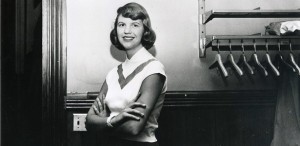 Sylvia Plath
Sylvia Plath
American Isis: The Life and Art of Sylvia Plath by Carl E. Rollyson.
Her poetry collection titled Ariel became a modern classic. Her novel The Bell Jar has a fixed place on student reading lists. American Isis will be the first Plath bio benefiting from the new Ted Hughes archive at the British Library which includes forty one letters between Plath and Hughes as well as a host of unpublished papers. The Sylvia Plath Carl Rollyson brings to us in American Isis is no shrinking Violet overshadowed by Ted Hughes, she is a modern day Isis, a powerful force that embraced high and low culture to establish herself in the literary firmament. [GoodReads]
Mad Girl’s Love Song: Sylvia Plath and Life Before Ted by Andrew Wilson.
Drawing on exclusive interviews with friends and lovers who have never spoken openly about Plath before and using previously unavailable archives and papers, this is the first book to focus on the early life of the twentieth century’s most popular and enduring female poet. Mad Girl’s Love Song reclaims Sylvia Plath from the tangle of emotions associated with her relationship with Ted Hughes and reveals the origins of her unsettled and unsettling voice.
Her Husband: Hughes and Plath, Portrait of a Marriage by Diane Wood Middlebrook.
Ted Hughes and Sylvia Plath were husband and wife; they were also two of the most remarkable poets of the twentieth century. In this stunning new account of their marriage, Diane Middlebrook draws on a trove of newly available papers to craft a beautifully written portrait of Hughes as a man, as a poet, and as a husband haunted?and nourished?his entire life by his relationship to Sylvia Plath. Her Husband is a triumph of the biographer?s art and an up-close look at a couple who saw each other as the means to becoming who they wanted to be: writers and mythic representations of a whole generation. [GoodReads]
Giving Up: The Last Days of Sylvia Plath by Jillian Becker.
Giving Up is Jillian Becker’s intimate account of her brief but extraordinary time with Sylvia Plath during the winter of 1963, the last months of the poet’s life. Abandoned by Ted Hughes, Sylvia found companionship and care in the home of Becker and her husband, who helped care for the estranged couple’s two small children while Sylvia tried to rest. In clear-eyed recollections unclouded by the intervening decades, Becker describes the events of Sylvia’s final days and suicide: her physical and emotional state, her grief over Hughes’s infidelity, her mysterious meeting with an unknown companion the night before her suicide, and the harsh aftermath of her funeral. Alongside this tragic conclusion is a beautifully rendered portrait of a friendship between two very different women. [GoodReads]
Wintering: A Novel of Sylvia Plath by Moses Kate.
This engrossing debut novel depicts Sylvia Plath’s feverish artistic process in the bitter aftermath of her failed marriage to Ted Hughes the few excruciating yet astoundingly productive weeks in which she wrote Ariel, her defining last collection of poems. In December 1962, shortly before her suicide, Plath moved with her two children to London from the Hughes’ home in Devon. Focusing on the weeks after their arrival, but weaving back through the years of Plath’s marriage, Kate Moses imagines the poet juggling the demands of motherhood and muse, shielding her life from her own mother, and by turns cherishing and demonizing her relationship with Ted. Richly imagined yet meticulously faithful to the actual events of Plath’s life, Wintering is a remarkable portrait of the moments of bravery and exhilaration that Plath found among the isolation and terror of her depression. [GoodReads]
Ariel’s Gift:Ted Hughes, Sylvia Plath and the Story of Birthday Letters by Erica Wagner.
When Ted Hughes’s Birthday Letters was published in 1998, it was greeted with astonishment and acclaim, immediately landing on the bestseller list. Few suspected that Hughes had been at work for a quarter of a century on this cycle of poems addressed to his first wife, Sylvia Plath. In Ariel’s Gift, Erica Wagner explores the destructive relationship between these two poets through their lives and their writings. She provides a commentary to the poems in Birthday Letters, showing the events that shaped them and, crucially, showing how they draw upon Plath’s own work. “Both narratively engaging and scholastically comprehensive.”—Thomas Lynch, Los Angeles Times “Wagner has set the poems of Hughes’s Birthday Letters in the context of his marriage to Plath with great delicacy.”—Times Literary Supplement [GoodReads]
The Unabridged Journals of Sylvia Plath, 1950-1962 by Sylvia Plath.
A major literary event–the complete, uncensored journals of Sylvia Plath, published in their entirety for the first time. Sylvia Plath’s journals were originally published in 1982 in a heavily abridged version authorized by Plath’s husband, Ted Hughes. This new edition is an exact and complete transcription of the diaries Plath kept during the last twelve years of her life. Sixty percent of the book is material that has never before been made public, more fully revealing the intensity of the poet’s personal and literary struggles, and providing fresh insight into both her frequent desperation and the bravery with which she faced down her demons. The complete Journals of Sylvia Plath is essential reading for all who have been moved and fascinated by Plath’s life and work. [GoodReads]
Sylvia Plath: A Biography by Linda Wagner-Martin.
The first biography of Sylvia Plath to draw on unpublished journals and letters, Sylvia Plath provides a detailed, objective, and illuminating portrait of this talented and tortured woman who is widely recognized as one of America’s foremost poets of the 20th century. 20 pages of photos. [GoodReads]
The Silent Woman: Sylvia Plath and Ted Hughes by Janet Malcolm.
From the moment it was first published in The New Yorker, this brilliant work of literary criticism aroused great attention. Janet Malcolm brings her shrewd intelligence to bear on the legend of Sylvia Plath and the wildly productive industry of Plath biographies. Features a new Afterword by Malcolm. [GoodReads]
Ariel Ascending: Writings About Sylvia Plath.
Editor Alexander (English, U. of Houston, Texas) undertook this critical anthology “”with the intention of providing not only a current critical look at Sylvia Plath but also–by including essays which avoid sensationzalizing her life and death and instead examine the craft of her poetry and prose–a sort of milestone to indicate a more appropriate way of regarding Sylvia Plath.”” The first seven pieces here focus on Plath’s poetry: Helen Vendler’s 1982 New Yorker review of The Collected Poems, with subdued praise for Plath’s genius at evoking “”wild states of feeling””: Joyce Carol Oates’ 1973 study of the lyric poetry; and less persuasive entries by Stanley Plumly, John Frederick Nims, Barbara Hardy, Mary Lynn Broe, and Katha Pollitt. Then comes Elizabeth Hardwick’s fine study of Plath’s self-destructive/art connection (from Seduction and Betrayal)–followed by three essays (Howard Moss, Robert Scholes, Vance Bourjaily) on The Bell Jar, Rosellen Brown’s useful quick-survey of Plath’s short fiction, and husband Ted Hughes on the Journals–a longer version of his introduction to their 1982 edition. And the final section offers somewhat more personal memoirs: Grace Schulman on Plath at Yaddo; Anne Sexton’s 1965 elegy; the well-known A. Alvarez memoir that become the core of The Savage God; and a four-page 1983 letter from Plath’s mother. [Kirkus Review]
The Journals of Sylvia Plath by Sylvia Plath.
Sylvia Plath began keeping a diary as a young child. By the time she was at Smith College, when this book begins, she had settled into a nearly daily routine with her journal, which was also a sourcebook for her writing. Plath once called her journal her “Sargasso,” her repository of imagination, “a litany of dreams, directives, and imperatives,” and in fact these pages contain the germs of most of her work. Plath’s ambitions as a writer were urgent and ultimately all-consuming, requiring of her a heat, a fantastic chaos, even a violence that burned straight through her. The intensity of this struggle is rendered in her journal with an unsparing clarity, revealing both the frequent desperation of her situation and the bravery with which she faced down her demons. Written in electrifying prose, The Journals of Sylvia Plath provide unique insight, and are essential reading for all those who have been moved and fascinated by Plath’s life and work. [GoodReads]
Letters Home: Correspondence, 1950-1963 by Sylvia Plath.
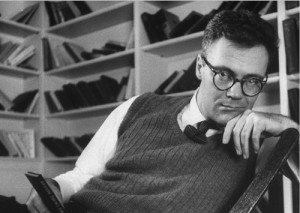 Robert Lowell
Robert Lowell
The Letters of Robert Lowell by Robert Lowell.
One of the most influential poets of the twentieth century, Robert Lowell was also a prolific letter writer who corresponded with many of the remarkable writers and thinkers of his day, including Elizabeth Bishop, Ezra Pound, Hannah Arendt, William Carlos Williams, T. S. Eliot, Robert Frost, and Edmund Wilson. These letters, conversations in writing, document the evolution of Lowell’s work and illuminate another side of the intimate life that was the subject of so many of his poems: his deep friendships with other writers; the manic-depressive illness he struggled to endure and understand; his marriages to three prose writers; and his engagement with politics and the antiwar movement of the 1960s. The Letters of Robert Lowell shows us, in many cases for the first time, the private thoughts and passions of a figure unrivaled in his influence on American letters. [GoodReads]
A collection of critical essays on Lowell and his works arranged in chronological order of publication. [Amazon]
Robert Lowell was known not only as a great poet but also as a writer whose devotion to his art came at a tremendous personal cost. In this book, his third on Robert Lowell, Jeffrey Meyers examines the poet’s impassioned, troubled relationships with the key women in his life: his mother, Charlotte Winslow Lowell; his three wives―Jean Stafford, Elizabeth Hardwick, and Caroline Blackwood; nine of his many lovers; his close women friends―Mary McCarthy, Elizabeth Bishop, and Adrienne Rich; and his most talented students, Anne Sexton and Sylvia Plath. [Amazon]
Robert Lowell by Richard J. Fein.
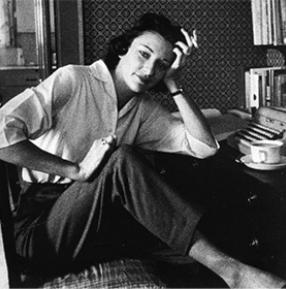 Anne Sexton
Anne Sexton
Anne Sexton: A Self-Portrait in Letters by Anne Sexton.
An expression of an extraordinary poet’s life story in her own words, this book shows Anne Sexton as she really was in private, as she wrote about herself to family, friends, fellow poets, and students. Anne’s daughter Linda Gray Sexton and her close confidant Lois Ames have judiciously chosen from among thousands of letters and provided commentary where necessary. Illustrated throughout with candid photographs and memorabilia, the letters — brilliant, lyrical, caustic, passionate, angry — are a consistently revealing index to Anne Sexton’s quixotic and exuberant personality. [GoodReads]
Anne Sexton: A Biography by Diane Wood Middlebrook.
Anne Sexton began writing poetry at the age of twenty-nine to keep from killing herself. She held on to language for dear life and somehow — in spite of alcoholism and the mental illness that ultimately led her to suicide — managed to create a body of work that won a Pulitzer Prize and that still sings to thousands of readers. This exemplary biography, which was nominated for the National Book Award, provoked controversy for its revelations of infidelity and incest and its use of tapes from Sexton’s psychiatric sessions. It reconciles the many Anne Sextons: the 1950s housewife; the abused child who became an abusive mother; the seductress; the suicide who carried “kill-me pills” in her handbag the way other women carry lipstick; and the poet who transmuted confession into lasting art. [GoodReads]
Anne Sexton by Caroline King Barnard Hall.
Searching for Mercy Street: My Journey Back to My Mother, Anne Sexton by Linda Gray Sexton.
Linda Gray Sexton’s critically acclaimed memoir is an honest, unsparing account of the anguish and fierce love that bound a brilliant, difficult mother and the daughter she left behind. Linda Sexton was twenty-one when her mother killed herself, and now she looks back, remembers, and tries to come to terms with her mother’s life. Life with Anne was a wild mixture of suicidal depression and manic happiness, inappropriate behavior, and midnight trips to the psychiatric ward. Anne taught Linda how to write, how to see, how to imagine–and only Linda could have written a book that captures so vividly the intimate details and lingering emotions of their life together. “Searching for Mercy Street” speaks to everyone who admires Anne Sexton and to every daughter or son who knows the pain of an imperfect childhood. This beautiful new trade paperback edition includes a new introduction by the author. [GoodReads]
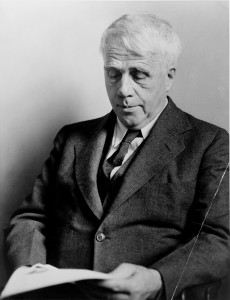 Robert Frost
Robert Frost
Robert Frost Speaking on Campus: Excerpts from His Talks, 1949-1962 by Robert Frost.
Robert Frost’s poetry has triumphantly survived him, but most readers today have not known him in one of his most significant capacities—as teacher and lecturer. Here, collected for the first time, are excerpts from forty-six of his presentations delivered to students at more than thirty academic institutions over three decades. Frost’s topics include: “What I think I’m doing when I write a poem,” “Getting up things to say for yourself,” “The future of the world,” “Fall in love at sight,” and “Not freedom from, but freedom of.” Gathered by Edward Connery Lathem, editor of The Poetry of Robert Frost, and introduced by Pulitzer Prize–winning journalist David M. Shribman, Robert Frost: Speaking on Campus reveals Frost in the setting of both classroom and lecture hall, where he inspired thousands. [GoodReads]
Robert Frost: A Life by Jay Parini.
This fascinating reassessment of America’s most popular and famous poet reveals a more complex and enigmatic man than many readers might expect. Jay Parini spent over twenty years interviewing friends of Robert Frost and working in the poet’s archives at Dartmouth, Amherst, and elsewhere to produce this definitive and insightful biography of both the public and private man. While he depicts the various stages of Frost’s colorful life, Parini also sensitively explores the poet’s psyche, showing how he dealt with adversity, family tragedy, and depression. By taking the reader into the poetry itself, which he reads closely and brilliantly, Parini offers an insightful road map to Frost’s remarkable world.[GoodReads]
Homage to Robert Frost by Joseph Brodsky.
Three of our generation’s greatest poets explore the misconceptions and mythologies that surround Robert Frost. [GoodReads]
After Frost: An Anthology of Poetry from New England by Henry Lyman
Thirty distinguished poets from Wallace Stevens to Martin Espada demonstrate the vitality and variety of New England’s poetic creation during the twentieth century. [GoodReads]
A Restless Spirit: The Story of Robert Frost by Natalie Bober.
Bober’s Frost is an amiable, simple-living man devoted to family and students, though ultimately dedicated to his poetry–a commitment that kept his family poor for decades. Bober tends not to question the medical diagnoses of the time, the 19th-century values that drove young Rob to prove his “”courage,”” Frost’s own decisions and actions, or the image he encouraged of the wise, benign, and reasonable poet-farmer. She does report, without comment, his persistence in persuading his intellectual wife-to-be to drop out of college to marry him, and his jealousy of her promising attempts at poetry, which moved her to give them up. But Bober tends to gloss over family conflicts and to ignore the personal and professional mean streak revealed in Thompson’s definitive three-volume biography. Except for occasionally quoting one of Frost’s poems and relating it to events in his life–an approach that works better here than with some poets–Bober doesn’t treat the poetry. [Kirkus Reviews]
The Art of Robert Frost by Tim Kendall
In addition to close readings of the poems, The Art of Robert Frost traces the development of Frost’s writing career and relevant aspects of his life. The book also assesses the particular nature of the poet’s style, how it changes over time, and how it relates to the works of contemporary poets and movements, including Modernism. The first book on Frost to combine selected poems with a critical study, this appealing volume will be welcome on the shelves of scholars, students, and all other readers who love fine poetry. [GoodReads]
Robert Frost: A Pictorial Chronicle by Kathleen Morrison.
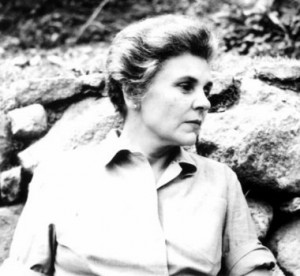 Elizabeth Bishop
Elizabeth Bishop
Elizabeth Bishop: Poems, Prose, and Letters by Elizabeth Bishop.
Robert Giroux and Lloyd Schwartz, editors James Merrill described Elizabeth Bishop’s poems as “more wryly radiant, more touching, more unaffectedly intelligent than any written in our lifetime” and called her “our greatest national treasure.” Robert Lowell said, “I enjoy her poems more than anybody else’s.” Long before a wider public was aware of Bishop’s work, her fellow poets expressed astonished admiration of her formal rigor, fiercely observant eye, emotional intimacy, and sometimes eccentric flights of imagination. Today she is recognized as one of America’s great poets of the 20th century. This unprecedented collection offers a full-scale presentation of a writer of startling originality, at once passionate and reticent, adventurous and perfectionist. It presents all the poetry that Bishop published in her lifetime, in such classic volumes as “North & South,” “A Cold Spring,” “Questions of Travel,” and “Geography III.” [GoodReads]
Words In Air: The Complete Correspondence Between Elizabeth Bishop and Robert Lowell by Elizabeth Bishop.
Robert Lowell once remarked in a letter to Elizabeth Bishop that “you ha[ve] always been my favorite poet and favorite friend.” The feeling was mutual. Bishop said that conversation with Lowell left her feeling “picked up again to the proper table-land of poetry,” and she once begged him, “Please never stop writing me letters—they always manage to make me feel like my higher self (I’ve been re-reading Emerson) for several days.” Neither ever stopped writing letters, from their first meeting in 1947 when both were young, newly launched poets until Lowell’s death in 1977. The substantial, revealing—and often very funny—interchange that they produced stands as a remarkable collective achievement, notable for its sustained conversational brilliance of style, its wealth of literary history, its incisive snapshots and portraits of people and places, and its delicious literary gossip, as well as for the window it opens into the unfolding human and artistic drama of two of America’s most beloved and influential poets. [GoodReads]
The More I Owe You: A Novel by Michael Sledge.
In this mesmerizing debut novel, Michael Sledge creates an intimate portrait of the beloved poet Elizabeth Bishop — of her life in Brazil and her relationship with her lover, the dazzling, aristocratic Lota de Macedo Soares. Sledge artfully draws from Bishop’s lifelong correspondences and biography to imagine the poet’s intensely private world, revealing the literary genius who lived in conflict with herself both as a writer and as a woman. A seemingly idyllic existence in Soares’s glass house in the jungle gives way to the truth of Bishop’s lifelong battle with alcoholism, as well as her eventual status as one of modernism’s most prominent writers. Though connected to many of the most famous cultural and political figures of the era, Soares too is haunted by her own demons. As their secrets unfold, the sensuous landscape of Rio de Janeiro, the rhythms of the samba and the bossa nova, and the political turmoil of 1950s Brazil envelop Bishop in a world she never expected to inhabit. The More I Owe You is a vivid portrait of two brilliant women whose love for one another pushes them to accomplish enduring works of art. [GoodReads]
Becoming a Poet: Elizabeth Bishop with Marianne Moore and Robert Lowell by David Kalstone.
Becoming a Poet traces the evolution of Elizabeth Bishop’s poetic career through her friendships with other poets, notably Marianne Moore and Robert Lowell. Published in 1989 following critic David Kalstone’s death, with the help of a number of his friends and colleagues, it was greeted with uniformly enthusiastic praise. Hailed at that time as “one of the most sensitive appreciations of Elizabeth Bishop’s genius ever composed” and “a first-rate piece of criticism” and “a masterpiece of understanding about friendship and about poetry,” it has been largely unavailable in recent years. [GoodReads]
Edgar Allan Poe
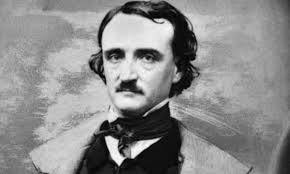 Poe-Land: The Hallowed Haunts of Edgar Allan Poe by J. W. Ocker
Poe-Land: The Hallowed Haunts of Edgar Allan Poe by J. W. Ocker
Edgar Allan Poe was an oddity: his life, literature, and legacy are all, well, odd. In Poe-Land, J. W. Ocker explores the physical aspects of Poe s legacy across the East Coast and beyond, touring Poe s homes, examining artifacts from his life locks of his hair, pieces of his coffin, original manuscripts, his boyhood bed and visiting the many memorials dedicated to him. Along the way, Ocker meets people from a range of backgrounds and professions actors, museum managers, collectors, historians who have dedicated some part of their lives to Poe and his legacy. Poe-Land is a unique travelogue of the afterlife of the poet who invented detective fiction, advanced the emerging genre of science fiction, and elevated the horror genre with a mastery over the macabre that is arguably still unrivaled today.” [GoodReads]
Edgar Allan Poe and the Juke-Box: Uncollected Poems, Drafts, and Fragments by Elizabeth Bishop
From the mid-1930s to 1978 Elizabeth Bishop published some ninety poems and thirty translations. Yet her notebooks reveal that she embarked upon many more compositions, some existing in only fragmentary form and some embodied in extensive drafts. Edgar Allan Poe & The Juke-Box presents, alongside facsimiles of many notebook pages from which they are drawn, poems Bishop began soon after college, reflecting her passion for Elizabethan verse and surrealist technique; love poems and dream fragments from the 1940s; poems about her Canadian childhood; and many other works that heretofore have been quoted almost exclusively in biographical and critical studies. This revelatory and moving selection brings us into the poet’s laboratory, showing us the initial provocative images that moved Bishop to begin a poem, illustrating terrain unexplored in the work published during her lifetime. Editor Alice Quinn has also mined the Bishop archives for rich tangential material that illuminates the poet’s sources and intentions. [GoodReads]
The Raven; With, The Philosophy of Composition by Edgar Allan Poe
An indispensable collection of the work of one of the 19th century’s most compelling and original poets, this comprehensive edition contains all of Edgar Allan Poe’s poetry and three most important essays. Reissued to coincide with the release of a major Hollywood film of the same title, it exposes Poe’s diversity and genius, from breathtakingly seductive beauty of “To Helen” to the claustrophobic horror of “The Raven.” Unique in that it features the poetry of a writer more famous for his fiction, this book proves that Poe’s work runs deeper than the American gothic genre. [GoodReads]
Edgar Allan Poe: His Life and Legacy by Jeffrey Meyers
This biography of Edgar Allan Poe (1809-1849), a giant of American literature who invented both the horror and detective genres, is a portrait of extremes: a disinherited heir, a brilliant but exploited author and editor, a man who veered radically from temperance to rampant debauchery, and an agnostic who sought a return to religion at the end of his life. Acclaimed biographer Jeffrey Meyers explores the writer’s turbulent life and career, including his marriage and multiple, simultaneous romances, his literary feuds, and his death at an early age under bizarre and troubling circumstances. [GoodReads]
On Poetry, Writing Poetry and Mental Illnesses
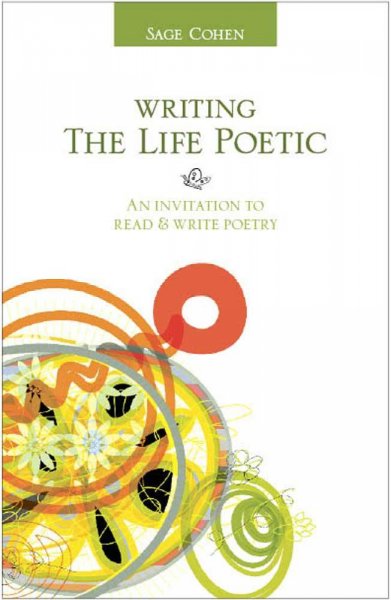

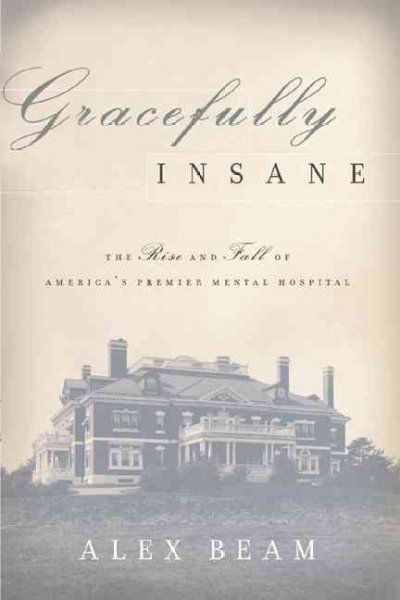
Writing the Life Poetic: An Invitation to Read and Write Poetry by Sage Cohen.
Writing Poetry for Everyday Life”Poetry is just the evidence of life,” says Leonard Cohen. “If your life is burning well, poetry is just the ash.” You don’t need an advanced degree to reap the rewards of a rich poetic life–writing poetry is within the reach of everyone. Poet Sage Cohen invites you to slow down to the rhythms of your creative process and savor poetry by: Offering explorations of the poetic life and craft Inspiring a feeling of play instead of laborious study Weaving together lessons in content, form, and process to provide a fun and engaging experience Inviting you to add poetry to your creative repertoire “Writing the Life Poetic” is the inspirational companion you’ve been looking for to help you build confidence in your poetic voice. [GoodReads]
The Mind’s Eye: A Guide to Writing Poetry by Kevin Clark.
The Mind s Eye, written by a published poet, focuses on imagery and sound and has the added benefit of being concise, inexpensive, and handy. Contemporary poetry as well as traditional form is discussed, with an emphasis on contemporary poets more than ninety of them and three student poets. Chapters deal with difficult topics such as racism, war, mortality, gender, and more. [GoodReads]
Poetry Matters: Writing a Poem from the Inside Out by Ralph J. Fletcher.
Maybe you’ve heard before that poetry is magic, and it made you roll your eyes, but I believe it’s true. Poetry matters. At the most important moments, when everyone else is silent, poetry rises to speak. I wrote this book to help you write poems and to give practical ideas for making your poems sound the way you want them to sound. We’re not going to smash poems up into the tiniest pieces. This book is about writing poetry, not analyzing it. I want this book to help you have more wonderful. moments in the poetry you write. I want you to feel the power of poetry. it’s my hope that through this book you will discover lots of ways to make your poems shine, sing, soar… [GoodReads]
Gracefully Insane: The Rise and Fall of America’s Premier Mental Hospital by Alex Beam.
Its landscaped ground, chosen by Frederick Law Olmsted and dotted with Tudor mansions, could belong to a New England prep school. There are no fences, no guards, no locked gates. But McLean Hospital is a mental institution-one of the most famous, most elite, and once most luxurious in America. McLean “alumni” include Olmsted himself, Robert Lowell, Sylvia Plath, James Taylor and Ray Charles, as well as (more secretly) other notables from among the rich and famous. In its “golden age,” McLean provided as genteel an environment for the treatment of mental illness as one could imagine. But the golden age is over, and a downsized, downscale McLean-despite its affiliation with Harvard University-is struggling to stay afloat. Gracefully Insane, by Boston Globe columnist Alex Beam, is a fascinating and emotional biography of McLean Hospital from its founding in 1817 through today. It is filled with stories about patients and doctors: the Ralph Waldo Emerson protégé whose brilliance disappeared along with his madness; Anne Sexton’s poetry seminar, and many more. The story of McLean is also the story of the hopes and failures of psychology and psychotherapy; of the evolution of attitudes about mental illness, of approaches to treatment, and of the economic pressures that are making McLean-and other institutions like it-relics of a bygone age. [GoodReads]
How to Read a Poem– And Start a Poetry Circle by Molly Peacock.
Molly Peacock has already brought poetry into people’s lives with her sold-out lectures, NPR appearances, and the creation of the “Poetry in Motion” program in the subway systems of major cities. Now she offers a book that strips away poetry’s scary mystique, introducing readers to its pleasures and inspiring them to form their own poetry circles with friends. Poetry is an invitation into new worlds both interior and exterior — and with this delightful volume, Molly Peacock shows us how to accept that invitation. [GoodReads]
An Unquiet Mind by Kay R. Jamison.
In her bestselling classic, An Unquiet Mind, Kay Redfield Jamison changed the way we think about moods and madness. Dr. Jamison is one of the foremost authorities on manic-depressive (bipolar) illness; she has also experienced it firsthand. For even while she was pursuing her career in academic medicine, Jamison found herself succumbing to the same exhilarating highs and catastrophic depressions that afflicted many of her patients, as her disorder launched her into ruinous spending sprees, episodes of violence, and an attempted suicide. Here Jamison examines bipolar illness from the dual perspectives of the healer and the healed, revealing both its terrors and the cruel allure that at times prompted her to resist taking medication. An Unquiet Mind is a memoir of enormous candor, vividness, and wisdom—a deeply powerful book that has both transformed and saved lives. [GoodReads]
Writing New England: An Anthology from the Puritans to the Present.
The story of New England writing begins some 400 years ago, when a group of English Puritans crossed the Atlantic believing that God had appointed them to bring light and truth to the New World. Over the centuries since, the people of New England have produced one of the great literary traditions of the world–an outpouring of poetry, fiction, history, memoirs, letters, and essays that records how the original dream of a godly commonwealth has been both sustained and transformed into a modern secular culture enriched by people of many backgrounds and convictions. [GoodReads]
The Fading Smile: Poets in Boston, 1955-1960 from Robert Frost to Robert Lowell to Sylvia Plath by Peter Davison.
This extraordinary account, by a participant who knew them all, offers vivid reminiscences of Robert Lowell, Adrienne Rich, Stanley Kunitz, Sylvia Plath, Richard Wilbur, Anne Sexton, W. S. Merwin, and many others who interacted with each other and shaped American poetry at mid-century. [GoodReads]
American Poets, From the Puritans to the Present by Hyatt Howe Waggoner.
A Revolution in Taste: Studies of Dylan Thomas, Allen Ginsberg, Sylvia Plath, and Robert Lowell by Louis Aston Marantz Simpson.
Alternative title: Some Grudging Thoughts About Four Competitors. A contemporary companion volume to his earlier Three on the Tower, which dealt with Eliot, Pound, and Williams, Simpson’s quartet of essays trades mostly in biography developed by others (and it’s chock-a-block with quotations only identified in the back of the book–hardly reassuring as to the book’s intellectual above-boardness). In Thomas’, Ginsberg’s, Plath’s, and Lowell’s cases, the “”revolution in taste”” they have wrought in modern poetry has been, according to Simpson, along the lines of poetry-as-passion. [Kirkus Reviews]
Bitches and Sad Ladies: An Anthology of Fiction by and About Women by Pat Rotter.
For more titles come to the library and see our National Poetry Month Display 


